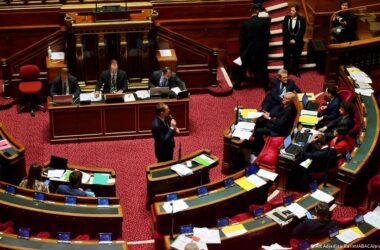A major police force in the UK is under fire after revelations that its recruitment policies may be sidelining White applicants in favor of boosting diversity figures.
West Yorkshire Police, one of the largest forces in the country, has implemented a recruitment approach that allows Black, Asian, and other minority ethnic candidates to apply for police constable roles year-round—while White applicants must wait for specific recruitment windows. The move, intended to enhance representation in the ranks, has sparked controversy and claims of discrimination.
According to internal sources and documents obtained by The Telegraph, candidates are categorized based on ethnicity, with non-White applicants reportedly fast-tracked under a “gold” label, while White individuals from Britain, Ireland, and Eastern Europe are placed in a “bronze” tier. Critics argue that this practice prioritizes race over merit.
One whistleblower raised concerns directly to senior leadership, saying the system “restricts progression opportunities for White British candidates,” adding that individuals from minority backgrounds are being advanced through recruitment steps before others can even apply.
The force defends its policy as a lawful form of “Positive Action” under the UK’s Equality Act 2010. In a public statement, a spokesperson explained that allowing early applications from under-represented groups doesn’t translate into favoritism. “All applications are held until recruitment is opened for everyone,” the spokesperson said. “No interviews are conducted before the official window opens.”
But behind the scenes, that may not tell the full story. The whistleblower insists that ethnic minority applicants are routinely assessed and interviewed ahead of their White counterparts, creating a de facto two-tier system.
The motivation behind the policy stems from ongoing concerns about representation. While around 23 percent of West Yorkshire’s population identifies as belonging to ethnic minority groups—according to the 2021 census—only about 9 percent of the local police force shares that background. In cities like Bradford, diversity is even more pronounced, with over 30 percent of the population identifying as Asian.
The police department insists it’s trying to reflect the communities it serves. “We aim to attract talent that mirrors our diverse society,” officials said, emphasizing that no one is guaranteed a role based solely on background.
Still, the policy has ignited a broader debate about fairness in public sector hiring. Detractors say that while diversity is important, it shouldn’t come at the expense of equal opportunity. As scrutiny intensifies, West Yorkshire Police may soon have to answer tougher questions about where to draw the line between representation and reverse discrimination.




